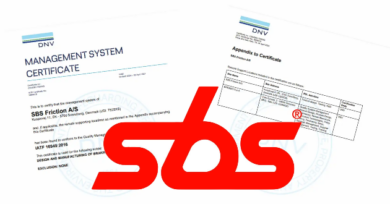OPINION – It’s a trick to see more than the illusion
This could be one of those chicken and the egg questions that seem so insignificant, but here goes. What’s more important to you — the result of an action, or the reason for the result?
It’s a question that came to mind in the middle of a magic act at The Mirage in Las Vegas.
A scantily clad woman had just laid down on a gurney and was being secured there with a series of leather straps. In the now almost cliché, but still mind-boggling magic act, two wooden boxes, with their bottoms cut out, were placed over the woman, each covering about half her body. Then, with music blaring and an audience of Suzuki officials and dealers looking on, an illusionist seemingly placed two metal plates through the wooden boxes and somehow, someway, separated the gurney so it appeared the woman had been neatly divided into two pieces. Of course, in tried and true tradition, the gurney was fashioned back into its original position and moments later the woman was sitting up and waving to the crowd.
The illusionist finished with one of those elaborate hand gestures similar to what Olympic gymnasts do at the end of their performance. But moments later, the illusionist had to repeat the hand gesture, meaning the Suzuki audience was so bewildered it didn’t bother to clap enough or it was answering, in its own way, the above question. Yes, the result of the magic act was terrific, but really we’re more interested in how it was done.
And it’s no wonder. Many of the dealers in the audience shared a similar schedule that I had. A day or two at the Kawasaki dealer meeting in Anaheim and then off to Las Vegas for the Suzuki event. In between the product demonstrations and buffets were a full course of how-to seminars.
How do you more effectively merchandise your units and accessories? How do you ensure your dealership draws more repeat customers? How do you make your service department profitable?
It’s a credit to Kawasaki and Suzuki that the pursuit of these answers takes on as much importance as the possible results. And it’s key that dealers focus on the pursuit of this knowledge — and not their possible financial consequences — if they’re going to perform the industry’s own set of magic acts.
Case in point: the service department. Gart Sutton and Steve Jones of Gart Sutton & Associates put on the seminar in Las Vegas that looked at ways of increasing service profits. It was meant as a teaser to what dealer principals and service managers can expect at a series of service seminars that will be held by Suzuki at 10 locations around the country in 2007.
When Jones and Sutton asked an overflow crowd to raise their hand if their service departments were profitable, they might as well have asked how many of them knew the take-a-card-out-of-the-deck-and-I’ll-correctly-guess-it trick.
Other questions, which if followed with a hand flourish would have received equal treatments to what the illusionist experienced, included:
Perhaps equally mystifying to dealers is the pursuit of repeat customers. It’s a subject that Robert Rowe of IB&A Marketing Research focused on in his Suzuki seminar.
The importance of the topic, of course, isn’t the mystifying part. It can cost 10 times more to sell to a new customer than an existing one. Plus, the repeat customer is likely to spend more and advise their friends to shop at your dealership.
Rowe’s surveys for Suzuki have found dealers with the highest customer satisfaction scores can expect more repeat customers. So how do dealers elevate their customer satisfaction scores? Treat them like the magician with the old rabbit in the hat trick. If the magician leaves the rabbit in his hat (where does he keep that rabbit?), then there’s no applause. Similarly, if the dealer keeps the customer satisfaction scores hidden away from his staff, then he shouldn’t expect any kind of noticeable improvement.
Of course the best trick detailed over the two dealer meetings was shared by Jim Rasmus, the president of Retail Design Associates. At the Kawasaki meeting, Rasmus shared the story of an Idaho dealer that moved from a facility with a high-traffic location to an area with low traffic … and prospered.
If you’re silently asking yourself what the Idaho dealer’s results were, like their unit sales growth, kick yourself. Applauding the unthinkable, the sleight of hand, is fine, but focus on the reasons behind it.
Otherwise, you’ll never get to do that elaborate hand gesture thing. psb
Neil Pascale is editor of Powersports Business. Contact him at npascale@ehlertpublishing.com




